 |
 |
 |
 |
Take a Step Back in Time...The long double-walled entrance to the
village palisade takes you into a bygone way of life...
|
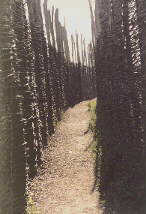 |
| This fifteenth century Iroquoian Village was reconstructed on its original site to create a unique opportunity to expand our understanding and appreciation of Ontario's original people. Three sources of information are being used to reconstruct the village. Archaeological data determined the exact location of the main structures along with other inground features such as fire pits and posts. |
 |
| Historical documentation (the records of Jesuits and early explorers)
provided details of the above ground portions of the longhouses, palisade
walls and smaller village structures. Finally, the native peoples of today
who carry on the traditions of their ancestors help us gain a stronger
appreciation of native culture and its unique relationship with Mother
Earth.
|
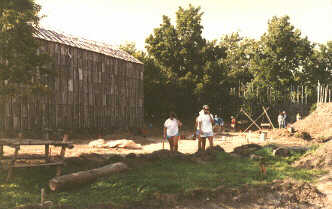 |
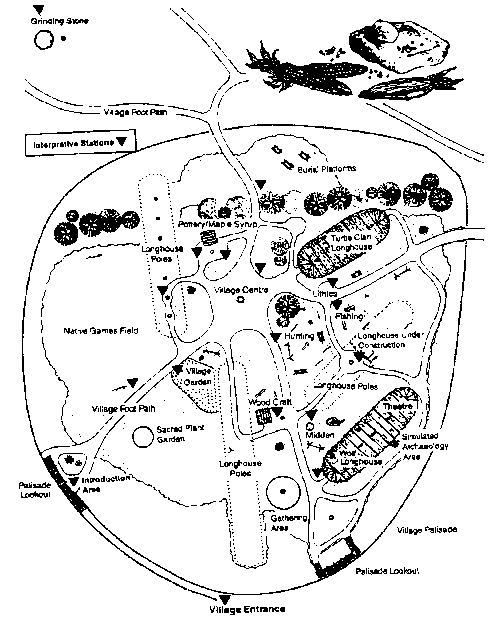 |
A Village Rises Again...
To help you explore and enjoy the village, we encourage you to follow the mounted information plaques located throughout the area. At the first plaque, "Silent Waters" will introduce you to the village and get you started on your journey back in time! Interpretive staff are available in the village to assist you with any questions. |
The Turtle Clan LonghouseThe smallest of the five longhouses and home to an estimated 48 people, the Turtle Clan longhouse measures 25 metres in length and is 7.7 metres wide. These dwellings were built as high as they were wide and very long, the length relating to the size of the family. The height of the longhouses allowed smoke from fires to rise above eye level.For more about this longhouse, and to see an interactive panorama of the interior, click here! ... or on the picture. |
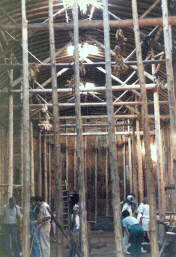 |
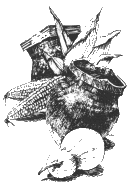
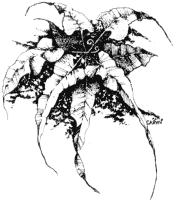
The Crawford Lake area is a fascinating place to study the Iroquoian occupants of southern Ontario because the area is located along the boundary between the Huron and the Neutral people. The area was occupied in the l3th, l4th and early 15th centuries by proto-Huron people while in the 15th,16th, and l7th centuries, prehistoric, protohistoric and historic Neutral people occupied this area.
 |
Halton Region Conservation Authority
R.R. 2 Milton, Ontario, Canada. L9T 2X6 (905) 338-1158 Fax: (905) 336-7014 Crawford Lake: (905) 854-0234 |
|
The Crawford Lake
Conservation Area is one of ten principal information parks on the Niagara
Escarpment.
|
 |